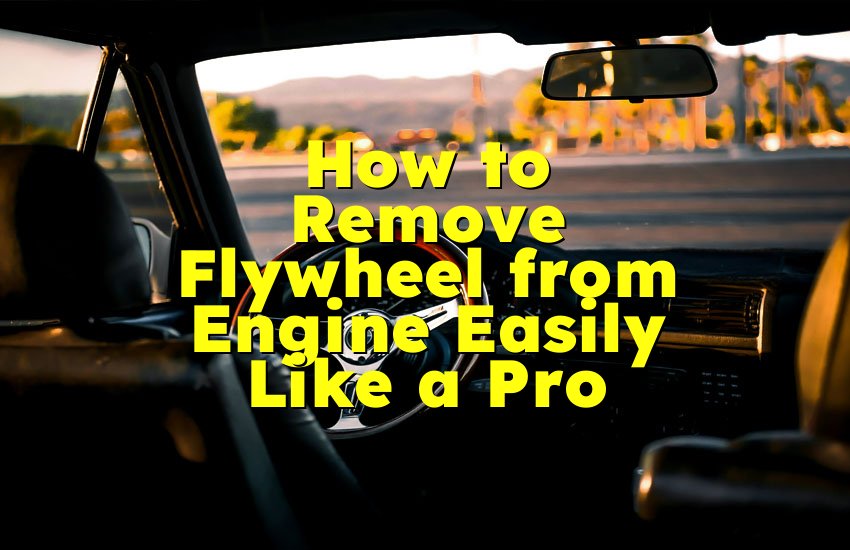As an Amazon Associate, I earn from qualifying purchases at no extra cost to you.
How Much Coolant Should Be in the Reservoir: Expert Advice
You probably looked under the hood and saw the coolant reservoir but weren't sure how much coolant should be in it. This is something every car owner wonders at some point. Here’s a clear answer: the coolant should be between the “MIN” and “MAX” marks on the reservoir. If it's below “MIN,” you need to add more. If it's above “MAX,” you should remove some. In this post, I'll help you fully understand everything about your car’s coolant reservoir in a very simple way, like a friend explaining it to you. You'll feel confident handling it by the end.
Find the Coolant Reservoir and Read the Marks
When you open the hood of your car, the engine area might look a bit scary at first. But don't worry, finding the coolant reservoir is not hard. It's usually a plastic container near the engine. Most of the time, it’s white or clear with a cap on top. You might even see colored liquid inside it. That's your coolant.
Now, on the side of the coolant tank, there are two lines. One says “MIN” and the other says “MAX.” These marks show you how much coolant should be inside the reservoir. When your engine is cold, the coolant level should be between those two lines. It shouldn't be too low or too high.
It's important to check the coolant when the engine is cold. Why? Because when the engine is hot, the coolant expands. If you check it right after driving, the reading can be too high and might confuse you. Always wait until the engine cools down completely before checking the level.
Many people ask, what happens if the coolant is below the “MIN” line? That means your engine is not getting enough coolant. This can cause it to overheat, which can lead to serious damage. That's something you definitely want to avoid.
If the coolant is above the “MAX” line, it might overflow when it gets hot. The coolant system is designed to hold only a certain amount. Too much coolant puts pressure on hoses and might cause leaks.
So take your time. Look at the reservoir and check where the fluid level is. You don't need any tools, and it only takes a minute.
- Find the plastic coolant reservoir near the engine.
- Look for the “MIN” and “MAX” marks.
- Only check when the engine is cold.
- The coolant level must be between the marks.
- Don't let it go below or above those lines.
Understand Why the Right Level Matters
Coolant is not just colorful liquid in your car. It has a big job to do. It keeps your engine at the right temperature. Without enough coolant, your engine can get too hot. That leads to breakdowns, damage, and big repair bills.
When your engine runs, it creates heat. The coolant moves through the engine, picks up the heat, and carries it to the radiator. From there, the heat gets pushed out into the air. But this only works if there's enough coolant in the system.
Too little coolant means the engine parts don't get cooled properly. This can cause metal parts to expand, crack, or even melt in extreme cases. Once damage starts, fixing it can cost a lot.
But what if there's too much coolant? That's a problem too. The system needs space for the coolant to expand as it gets hot. If the reservoir is too full, the extra pressure might damage the cap, hoses, or even the radiator. Coolant can also spill out and make a mess under the hood.
Keeping the coolant at the right level helps your engine run better, last longer, and avoid costly problems. It also helps you stay safe. An overheated engine can stop your car on the road, which is dangerous.
Remember, coolant also protects against freezing. In cold weather, it keeps the engine from freezing up. So both hot and cold, this liquid is very important. But only when it’s at the right level.
If you make it a habit to check the coolant every few weeks or before long drives, your car will thank you. You'll drive with more peace of mind.
- Coolant prevents engine overheating and freezing.
- Too little coolant can damage the engine.
- Too much coolant can cause pressure and leaks.
- The right level helps your car run better and safer.
- Check often to avoid future problems.
Know When and How to Add More Coolant
So you checked your coolant level and it's below the “MIN” line. What do you do now? Don't worry. Adding more coolant is easy, and you don't need to be a mechanic.
First, make sure the engine is completely cool. Never open the coolant cap while the engine is hot. The pressure inside can cause hot coolant to spray out, which can burn your skin badly. Wait at least an hour after driving.
Next, get the right type of coolant for your car. Check your car's manual or the cap on the coolant reservoir. Some cars use a special type, and mixing the wrong one can cause problems.
Open the coolant cap slowly. Use a rag if you want to protect your hand. Look inside the reservoir. If the level is below the “MIN” mark, slowly pour coolant in until it reaches between “MIN” and “MAX.” Don't go over the top line.
You can use a funnel to make pouring easier and avoid spills. If you do spill, wipe it right away. Coolant is sweet-smelling but toxic. Keep it away from pets and kids.
Once the level is right, close the cap tightly. Then, take a short drive and check the level again when the engine cools. Sometimes, air bubbles inside the system can change the level a little.
If you have to add coolant often, you might have a leak. Look under the car or around the engine for wet spots or stains. That's a sign something is wrong. If you see it, visit a mechanic.
- Only add coolant when the engine is cold.
- Use the correct coolant type for your car.
- Fill slowly up to the “MAX” mark, not more.
- Use a funnel to pour without spilling.
- Watch for signs of leaks if coolant drops often.
Check the Coolant Often and Keep it Clean
Just like you check your phone battery or gas tank, it's a good idea to check your coolant level regularly. Many people forget, but it takes only one minute and can save you from big problems later.
Once a month is a good habit. Open the hood and look at the coolant tank. You don't even need to open the cap if the tank is clear. Just check the level through the plastic.
Also, look at the color of the coolant. It should be bright, usually green, orange, or pink depending on the type. If it looks rusty, brown, or has stuff floating in it, that's not good. It means the coolant is dirty and may not work well.
Dirty coolant can clog up your engine's cooling system. That makes it harder to cool the engine, and your car might overheat. If you see dirty coolant, it's time to flush the system and replace it.
Your car might also tell you if there's a problem. Some cars have a light on the dashboard that comes on if the coolant level is too low. Don't ignore that light. It's a warning sign.
Keeping the coolant clean and at the right level helps your car live longer. It keeps the engine healthy, and you'll have fewer trips to the repair shop.
You don't need to be a car expert. Just be a little curious and careful, and your car will reward you with smooth drives.
- Check coolant once a month even if the car runs fine.
- Clean coolant should be bright and clear, not dirty.
- Dirty or old coolant needs to be replaced.
- Watch for dashboard warning lights.
- Regular checks prevent expensive car repairs.
Learn About Coolant Types and Mixing Rules
Not all coolants are the same. This might be confusing, but using the wrong one can cause damage. So it's very important to understand the type of coolant your car needs.
There are three common types of coolant:
- Inorganic Additive Technology (IAT) – usually green.
- Organic Acid Technology (OAT) – usually orange or dark.
- Hybrid Organic Acid Technology (HOAT) – can be yellow or blue.
Each type is made for different engine designs. Mixing them can cause the coolant to turn into a thick gel, which blocks the system. That's very bad for your car.
So how do you know what type to use? Check your car's manual. It will tell you the exact type. You can also look at the cap of the coolant reservoir. Sometimes it says the required type right there.
If you're topping off the coolant and not flushing the whole system, only use the same type already inside. If you don't know what's in there, it's safer to flush it all and start with fresh coolant.
Also, some coolants are pre-mixed with water, and some are not. If it says “50/50,” it means you can pour it in directly. If it doesn't, you need to mix it with distilled water. Tap water is not good because it has minerals that can cause buildup.
So take a moment, read the label, and make sure you're using the right kind. It might seem small, but it protects your engine in a big way.
- Know the type of coolant your car needs.
- Never mix different types of coolant.
- Use 50/50 premix or mix coolant with distilled water.
- Check your car manual or reservoir cap for info.
- Use caution when changing or adding coolant.
Know When to Get Help from a Mechanic
Sometimes, even if you do everything right, you still might have coolant problems. That's when it's time to ask for help from a mechanic. It's not a sign of weakness — it's smart to know when things are too serious to fix yourself.
Here are signs you need a mechanic:
- You keep adding coolant every few days.
- You see coolant leaking under your car.
- The temperature gauge goes up quickly when you drive.
- Steam comes from under the hood.
- You smell something sweet, like syrup, while driving.
All of these signs could mean a leak, a broken part, or a bad radiator. A mechanic can test the system with special tools to find the problem.
Also, if your car is older, it might need a coolant flush. That's when all the old coolant is taken out and replaced with fresh coolant. This helps clear out rust, dirt, and other gunk inside.
Some things like a broken water pump or cracked radiator hose are not easy to fix at home. A mechanic has the right tools and experience to fix them safely.
It's better to fix small problems before they become big ones. Driving with low or leaking coolant can destroy the engine. That's why sometimes, the best thing to do is let a pro take a look.
- Call a mechanic if coolant keeps dropping fast.
- Steam or overheating means something is wrong.
- A flush can help old cars work better.
- Sweet smells and puddles under car are warning signs.
- Getting help early saves time and money.
Final Thoughts
Coolant might seem like a small thing, but it plays a big role in your car's health. Knowing how much coolant should be in the reservoir and how to keep it there can save you from engine damage and big repair bills. Always check between the “MIN” and “MAX” marks, use the right type, and don't ignore signs of trouble. Whether you top it off yourself or ask a mechanic for help, staying on top of coolant care helps you enjoy smoother, safer drives every time.
Frequently Asked Questions (FAQs)
Is it bad if my coolant level is just below the “MIN” line?
Yes, it can be bad. If your coolant level is slightly below the “MIN” line, your engine might not get enough coolant when it’s running. This can cause it to heat up more than normal. Over time, even a small shortage can lead to overheating and damage important engine parts. It's always best to keep the level right between “MIN” and “MAX.” If you see it below “MIN,” add coolant as soon as the engine is cool. It's an easy fix, but ignoring it can lead to costly repairs later.
Can I mix water with coolant if it’s low?
You can, but only in certain situations. If you’re stuck and don't have coolant, adding a little clean, distilled water is okay for a short time. It helps keep your engine cool until you can get the right coolant. But don't make it a habit. Water alone doesn't protect against rust or freezing. Always try to use a 50/50 mix of coolant and distilled water. Never use tap water because it contains minerals that can clog the system over time.
Is it okay to drive with low coolant?
No, it's not a good idea. Driving with low coolant means your engine doesn't have enough protection to stay cool. It can overheat quickly, especially in warm weather or during long drives. Overheating can cause your engine to shut down, or worse, it might lead to serious damage like a blown head gasket. If you notice low coolant, stop and add more if you can. If not, get your car to a mechanic before driving more.
Do I need to check the coolant if my car is not overheating?
Yes, you still need to check it. Just because your car isn't overheating doesn't mean the coolant is okay. Many problems start small and grow over time. A low level today could cause overheating next week. Checking it regularly helps you catch issues early. It's quick and easy to do and can prevent bigger problems later. Don't wait for the engine to run hot before paying attention to the coolant level.
Is it safe to open the coolant cap myself?
It's only safe if the engine is completely cold. If the engine is hot, never open the coolant cap. The pressure inside the system can force hot coolant to spray out, which can burn your skin or eyes. Wait at least an hour after driving before touching it. If you must open it, use a rag and turn the cap slowly. Always be careful and follow the safety steps. If you're unsure, it's okay to ask a mechanic for help.
Can I just fill the coolant to the top?
No, you should not fill it all the way to the top. The coolant needs space to expand when it gets hot. That's why there's a “MAX” line on the reservoir. Filling above that line can create too much pressure and may cause leaks or damage to the cooling system. Always fill between the “MIN” and “MAX” lines, not above. It might seem like more coolant is better, but too much can cause its own problems.
Do I need to use the same color coolant?
Yes, it's best to use the same color or type that is already in your system. Different coolant types have different chemical formulas. Mixing them can cause the coolant to react badly, forming a thick sludge that can block the cooling system. Always check your car manual or ask a mechanic if you're unsure. Stick with the same color and type unless you're doing a full coolant flush. Then, you can switch, but only after cleaning out the system completely.
Is it normal for coolant to disappear over time?
Some small loss of coolant over time is normal, especially in older cars. A tiny amount can evaporate. But if you're adding coolant often or notice large drops in level, it could mean a leak. Coolant leaks might be inside the engine or outside where you can see puddles. It's important to watch the level and check regularly. If you suspect something is wrong, have a mechanic check it before it gets worse.











